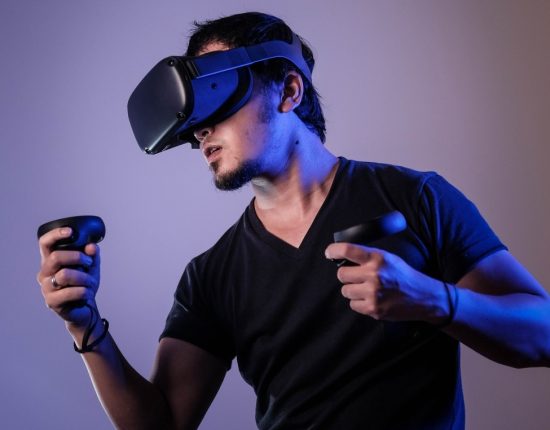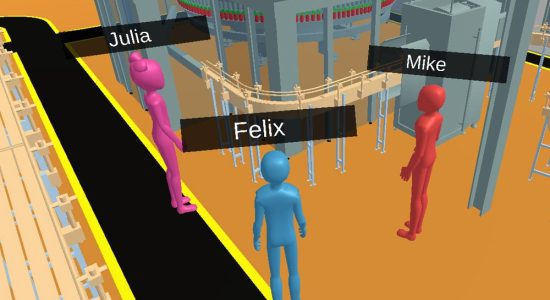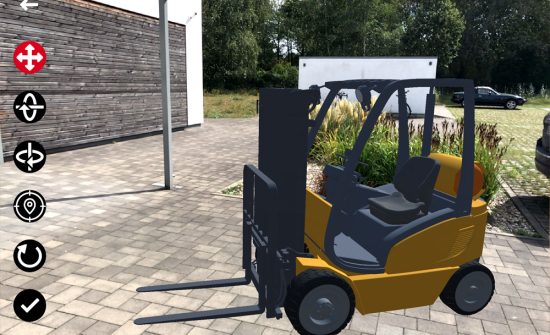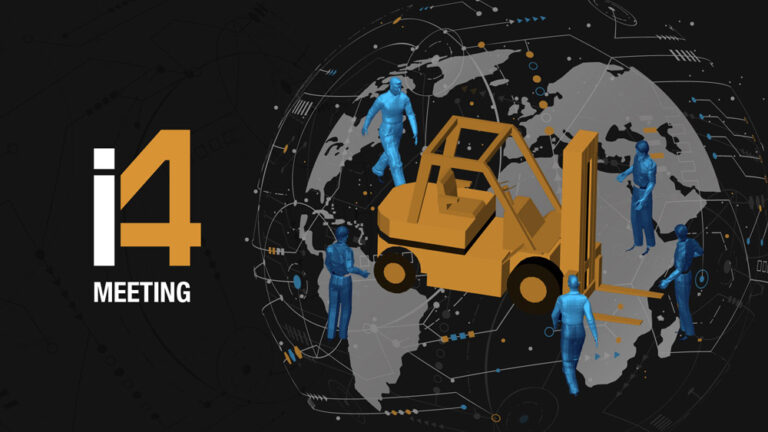The Metaverse: Overview, use cases and tips
Technologies such as virtual or augmented reality are finding their way into our everyday lives. The use cases are just as diverse in industry as they are in the entertainment sector. The metaverse shows us a goal that can already be achieved by companies today.
One metaverse or several?
The concept of the metaverse basically encompasses a virtual space in which several users can meet via the internet and communicate and interact with each other and their environment. Today, the definitions are as diverse as the individual approaches to bring the metaverse to life. Based on current use cases, it is not a single virtual parallel world, as the term metaverse might suggest, but rather it is multiple metaverses in which individual gaming or marketing projects can be implemented.

With regards to virtual and augmented reality (VR and AR), the concept of the metaverse can be transferred to both the virtual and the real world. For example, one could take things from the real world, such as a factory building or the 3D scan of a production line, into the virtual world and experience them with the help of VR glasses regardless of one’s location in the real world. On the other hand, things from the virtual world, such as a 3D design of a plant, can also be placed in the real world with the help of AR glasses. These possibilities allow for an integration of the metaverse into our daily lives which opens up further undreamed-of possibilities for the productive application of the new technologies.

Is the metaverse a concept or already a reality?
Even before Meta (formerly Facebook) created the hype around the buzzword metaverse, there were already several realised metaverses. The development here is very clearly shaped by the entertainment industry, which means that in some circles there is still the opinion that AR or VR is just pure gimmickry. But many companies today are taking this topic very seriously. Individual project teams and departments are being set up to build solutions for the productive use of AR and VR technologies. These solutions must be tailored to suit the requirements of each individual department because, for example, the design department has different goals to the production or marketing departments.
Even if AR and VR technologies are already in use in an industry, there is still a need for standard solutions that companies can use directly to build their own usable metaverses. However, software development companies have long since recognised this need and already offer appropriate standard solutions. The German software company CAD Schroer, for example, offers a solution with the i4 MEETING platform that enables companies to create an unlimited number of metaverses. Administrators design the metaverses with their own 3D models, videos and images, and then make them available to users via a simple link. Users can then immerse themselves in the individual metaverses using a PC, tablet or VR glasses and meet with other users there.
Metaverse use cases in practice
In practice, AR and VR can be used productively when a direct link can be established to a company’s products. Considering a typical product life cycle, it can be seen that potential use cases arise in sales & marketing, design, manufacturing, assembly and servicing. Virtual meeting rooms containing virtual representations of a company’s products can help to design them even better, and also to promote them to an even larger market.

Let’s look at a factory, and production in particular, as a practical example of the metaverse’s potential. Regardless of whether it is a new factory or the modification of existing facilities, one of the first steps is the design of the 3D factory layout. This must be prepared with regards to the production process and the available space. With the help of a common virtual space, in which all stakeholders can meet regardless of their real-world location, the 3D design can be produced even faster while meeting all stated requirements. If one then places the 3D design in its intended location in the real world using AR, unforeseen problems can be further detected at an early stage.
The metaverse for customer acquisition
Sales and marketing can use a metaverse to effectively present a CAD design in a virtual meeting room. The customer can then realistically view and walk-through the design in the virtual room before it has been manufactured and installed. The metaverse can also be used for workshops with the customer in which the design is further enhanced to meet the customer’s specific requirements. Meanwhile, the sales department can use other metaverses as digital exhibition platforms to attract new customers, and they can even take a CAD design to a customer site and place it directly on their premises with the help of an AR viewer.

Once the design is complete, the new plant is constructed. Production then starts and the machinery has to be maintained. Here too, the metaverse finds productive use. For example, production staff can be trained in virtual space. The 3D design data can be used to create AR instructions that are displayed directly on the actual machines to indicate the assembly and servicing steps necessary for the task at hand.
More integration between metaverse and reality
The application examples listed above and more can be achieved using currently available standard solutions. However, the Metaverse has much greater potential, but to effectively tap into it, a broader user base is needed to provide application feedback to research and development. After all, it is only through the daily use of solutions that obstacles will be overcome, enabling the technology to become a helpful part of our daily lives, rather than something new and novel.
Build your own metaverse with i4 MEETING
FAQ: Frequently asked questions about metaverse
One way to create your own metaverse is to use an existing virtual world platform, such as i4 MEETING. Here, your own created models can be invited into a virtual environment. This world can be further enhanced with pictures, videos and other documents. Another way to create your own metaverse is to create your virtual world from scratch with a tool like Unity3D or Unreal Engine. This requires more technical skills and knowledge, but also gives you complete control over everything in your world.
There are many ways to immerse yourself in a metaverse. A metaverse is a virtual world that exists on the internet. As an example, i4 MEETING is used to create a metaverse. People can enter this metaverse and immerse themselves in it. In this virtual world, people can interact with each other or simply explore this world. For this experience, people use an app (e.g. i4 MEETING) on their PC, tablet or smartphone. If you want an even higher immersion, VR glasses are recommended.

